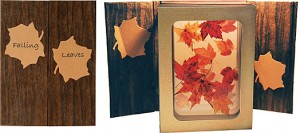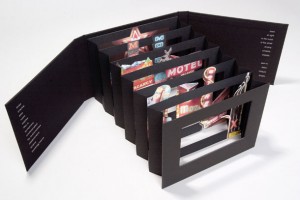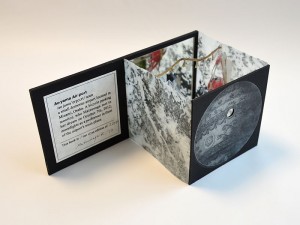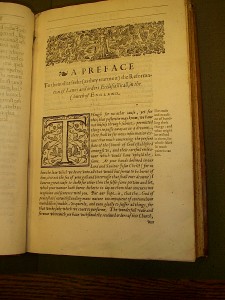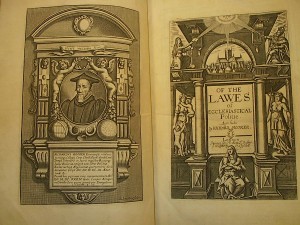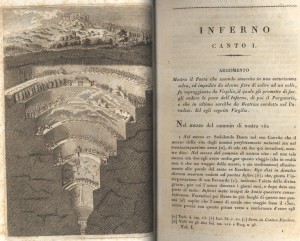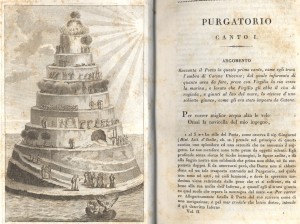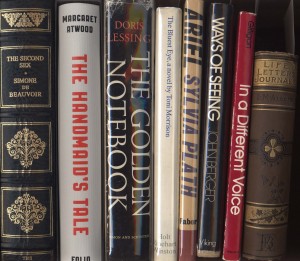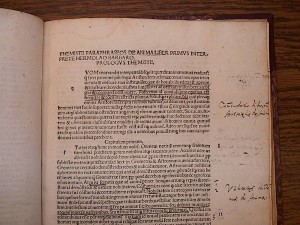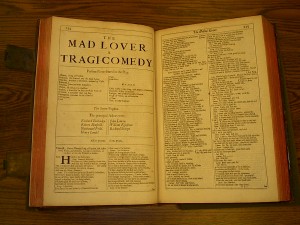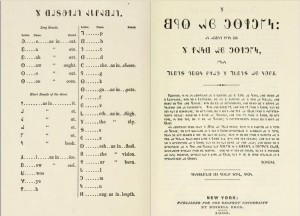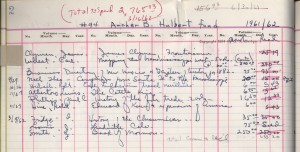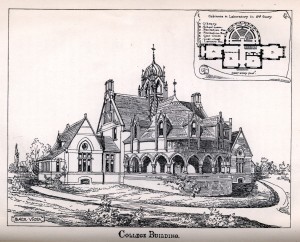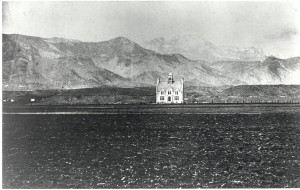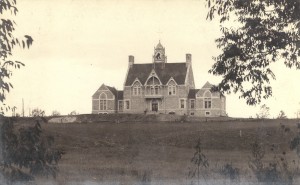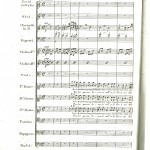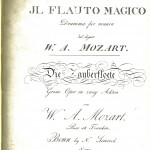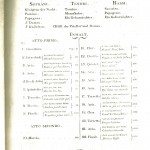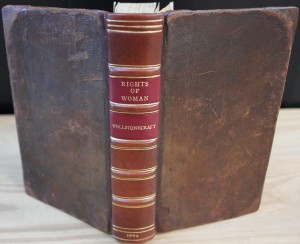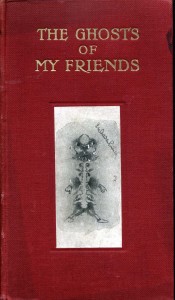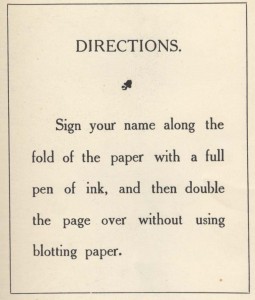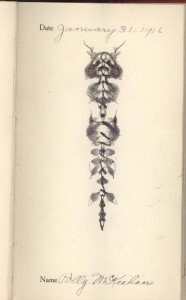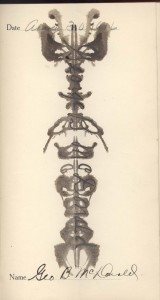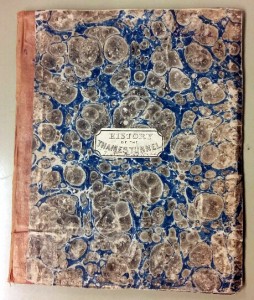
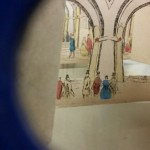 Tunnel books have been made and sold since the mid-18th century in Europe. The earliest one in CC Special Collections, History of the Thames Tunnel (1861), was sold to tourists in England, as was our next-earliest, The Picture-Post Coronation Peep-Show Book (1953).
Tunnel books have been made and sold since the mid-18th century in Europe. The earliest one in CC Special Collections, History of the Thames Tunnel (1861), was sold to tourists in England, as was our next-earliest, The Picture-Post Coronation Peep-Show Book (1953).
Our copy of the Thames Tunnel book is quite worn, suggesting that many people looked through its eye-holes over the years before it came to the library.
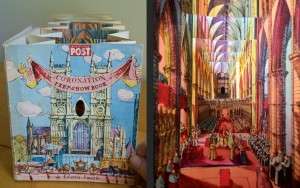 Our Coronation book, on the other hand, was purchased in kit form and never put together. Luckily, the Journal of Wild Culture offers a photo essay showing what the book looks like from various angles.
Our Coronation book, on the other hand, was purchased in kit form and never put together. Luckily, the Journal of Wild Culture offers a photo essay showing what the book looks like from various angles.
Our other tunnel books are artists’ books made in the last two decades. Edward H. Hutchins’s Arizona Wildlife (1999) is made from picture postcards.
Jill Timm’s Falling Leaves (2006).
Laura Russell’s Nocturne (2004) shows a fanciful version of the neon signs on Colfax Avenue in Denver and is a favorite among CC students.
Kyoko Matsunaga’s Aoyama Airport (2013).
For a good overview of tunnel books, see Jean-Charles Trebbi’s The Art of Pop-Up: The Magical World of Three-Dimensional Books (Promo Press, 2012), available at many libraries.


